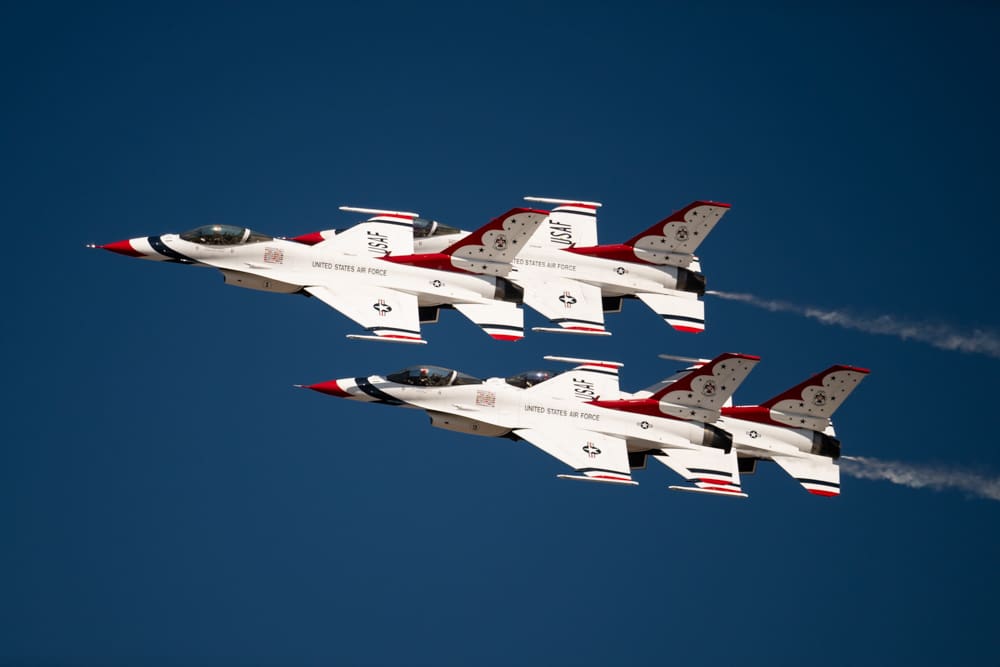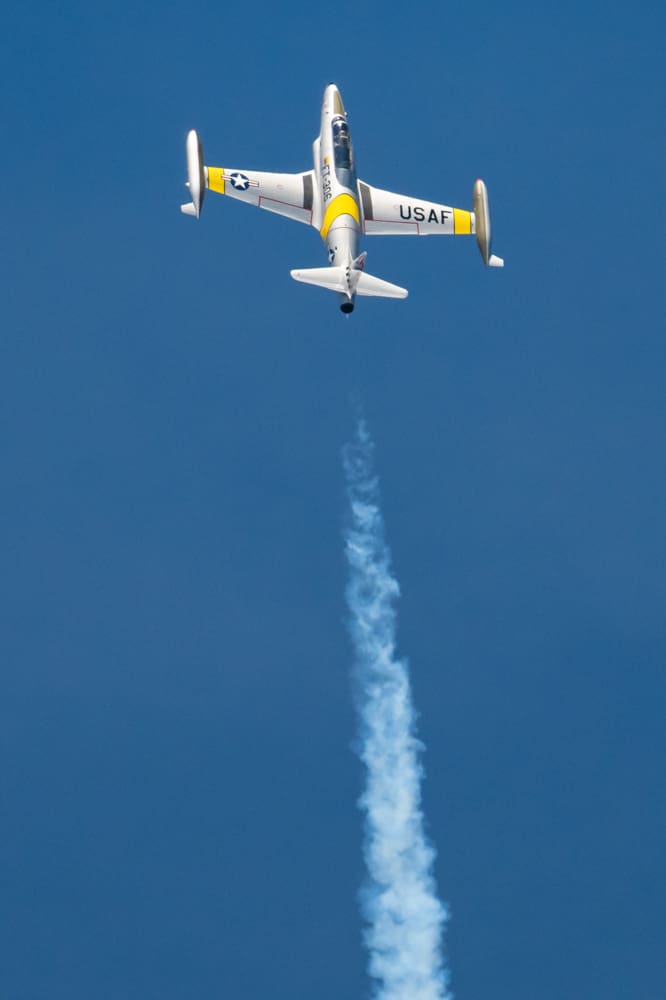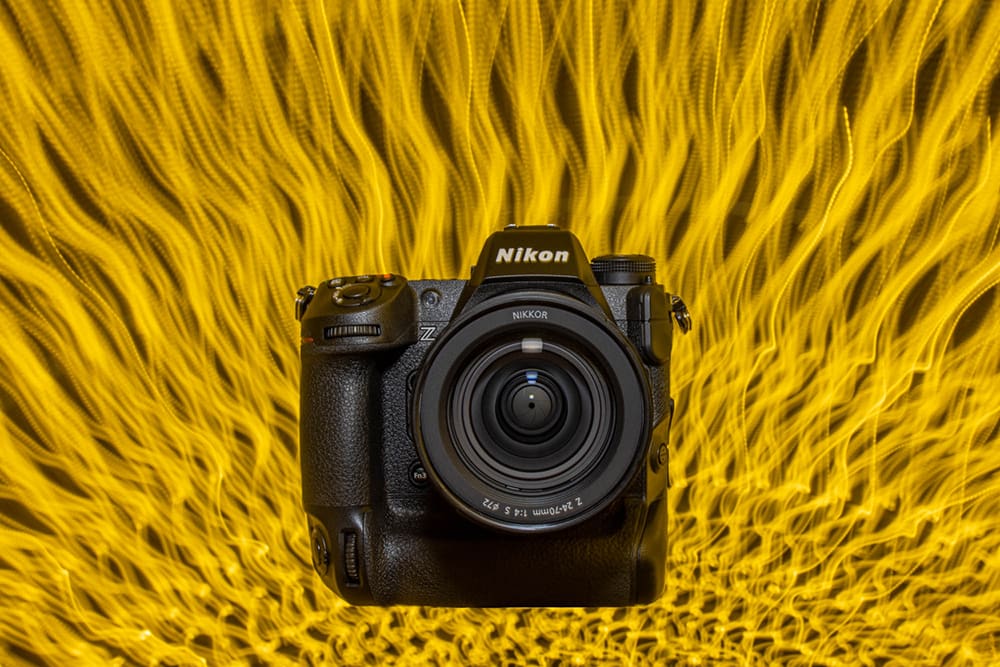As a long time Seattle area resident I’ve seen and photographed my share of airplanes and air shows. Seattle’s summer celebration known as Seafair is a festival featuring hydroplane races, parades and an air show. Always scheduled in early August the air show portion of this event provides a unique opportunity to photograph a variety of aircraft in flight in an ideal scenic setting.
Seafair and its variety of events was strongly embedded on my childhood memory. I recall delivering newspapers on my bike and being able to hear the roar of the jet engines that powered the hydroplane, from more than 10 miles away. I was especially attentive to the roar of the Navy’s Blue Angles flight squadron as their flight path would occasionally take one of them over our neighborhood. If I was lucky enough to be in the right spot I might catch a glimpse of one of the F/A-18E Super Hornets as it rocketed overhead.

Nikon Z 8, Nikkor Z 100-400mm F/4.5-5.6 VR S @ 400MM | f/5.6 | 1/2000 sec | ISO 500
You might imagine my excitement as a young photojournalist intern working at a local newspaper to be assigned to photograph the Seafair hydro races and Blue Angels performance. Little did I know that the more seasoned photographers were happy to give up the assignment. Apparently not everyone is keen to haul heavy expensive equipment around huge crowds fueled by alcohol in stinking hot weather. I can just see them now laughing in the darkroom “let the interns have that one.”
My fellow intern and I hauled the Nikon AI-S Nikkor 600mm F/4 ED-IF which weighed 12 pounds and the case that seem to double the weight, as well as all the other lenses, cameras, and film to last through a full day of shooting. As each of us held the handles on either end of the large 600mm lens case we wound our way through the thick crowd looking for a vantage point where we could set up the large tripod that the lens would require.

Nikon Z 8, Nikkor Z 100-400mm F/4.5-5.6 VR S @ 220MM | f/5.6 | 1/1000 sec | ISO 125
All this took place back in 1989 when autofocus was in its infancy. I had recently invested quite a bit of money on getting my first professional camera setup. I was working with a Nikon F4s and collection of autofocus prime lenses, the longest of which was a 300mm F/4. The 600mm we would need to capture the hydro race and air show was manual focus.
It now dawns on me how most photographers today have little to no experience focusing a manual lens with action subjects. In short, it’s not easy, in fact it requires professional athlete skills to be done right. For a 45 minute air show I could expect to shoot through a couple of rolls of film (I’d have shot more, but the airplanes were a side-show to the main event of the hydro racing) and would hopefully come back with a handful of in-focus compositionally acceptable shots.

Nikon Z 8, Nikkor Z 100-400mm F/4.5-5.6 VR S @ 400MM | f/5.6 | 1/1250 sec | ISO 800
Shooting with the Z 8
Fast forward 34 years and I’m now shooting a Nikon Z8 with 45 megapixels (about 4x the resolution of film), super fast autofocusing lenses and subject detection that can specifically identify airplanes. I’m shooting with the Nikon Nikkor Z 100-400mm f/4.5-5.6 VR S lens, at a svelte 3.2 pounds. The entire package of Z8 and 100-400mm comes to only 5 lbs which makes it very easy to handhold and easy to follow fast moving planes.
I was taking it to the JBLM (Joint Base Lewis-MChord – Washington) Airshow & Warrior Expo with a variety of aircraft and featuring the USAF Thunderbirds. This is my first time at this event and my first time photographing at McChord Air Force Base which offers a grand view of Mt. Rainier as an ideal background element.

Nikon Z 8, Nikkor Z 100-400mm F/4.5-5.6 VR S @ 200MM | f/5.6 | 1/2000 sec | ISO 900
I want to be clear; a 100-400mm f/4.5-5.6 is no 600mm f/4 in many different ways.
One of the most distinctive features and benefits of 600mm f/4 is the shallow depth-of-field that allows you to separate your subject from the background. But when photographing a plane against a blue sky, depth-of-field really isn’t an issue to worry about.
Now, about that focal length difference between 400mm and 600mm, yes that is very noticeable and something that limits the types of shots you can get in the field. The Nikon Z8 has a handy feature that can help out in this type of situation. The “Image area” option located in the Photo Shooting Menu allows you to shoot in the DX frame area. This is where the camera only records an image within a 24x16mm area which is an effective 1.5x crop for the 24x36mm full frame area of the Z8. This smaller image area transforms a 100-400mm to an effective 150-600mm focal length. There is a penalty to pay as the resolution will drop from 45MP to 19MP.
——-
You can avoid using the DX crop to get to that magical 600mm focal length. Nikon has recently introduced the Nikkor Z 180-600mm f/5.6-6.3 VR lens. The 4.3 lb lens would be the perfect hand-holdable lens for an air show or other similar type subject like sports and wildlife.
——-
The drop of 26MP is significant, yes, but a 19MP image is more than enough for most modern needs of an image for most photographers. In my comparison from 1989 to 2023 I was shooting with gear that was 1/3 the weight, twice the resolution and the ability to shoot at 20 fps compared to 5.6 fps resulting in well over 1000 images with virtually every image properly exposed and in-focus.
The AF subject detection ability to specifically track airplanes was both remarkable and imperfect. For most airplane passes the focus and tracking was spot on, with perfect focus even at 20fps and the planes moving near subsonic speeds. Even with an airplane on the tarmac more than two miles away and significant air distortions caused by heat, the Z8 was able to identify and focus on its subject.

Not a good photo, but a great example of how sensitive the airplane recognition mode is. The camera was able to identify these two blurry planes from more than 2 miles away.
Nikon Z 8, Nikkor Z 100-400mm F/4.5-5.6 VR S @ 400MM | f/5.6 | 1/400 sec | ISO 180
The subject detection did fail a few times when the subject was in front of a cluttered background of trees. These lapses in detection were very few and far between, but they were a reminder that we are still in the early days of subject tracking and that it’s good to know multiple ways in which to acquire focus on a subject.
We live in a phenomenal time; it’s easier to capture images than ever before. Yes, the technology is a bit daunting, which is why I’ve created a number of Complete Camera Guides – like my new Nikon Z8: Complete Camera Guide – to take you through all the operations of a camera. Despite the vast improvements in camera performance people still find faults to pick at.

Nikon Z 8, Nikkor Z 100-400mm F/4.5-5.6 VR S @ 400MM | f/5.6 | 1/2000 sec | ISO 500
As I peruse the posts and comments of Facebook photography groups I see frequent posts about imperfect focusing of modern cameras. I think back to 1989 and the handful of images I would have been satisfied with back then. I think to today where I can shoot through 1,462 images where none of them were discarded because of focus issues.
We’re in a phase of rapid development with focus tracking. No, we’re not at a point of perfection, but we are in a world where most of the technical obstacles have been removed. It’s now up to you and your creativity to control your image with your point of view, angle of view, background, lighting and timing, just like its always has been.
Become part of John’s inner circle
Sign up for the newsletter here — it’s free.
Want to become a better photographer?
Check out John’s selection of photography and camera classes here.



